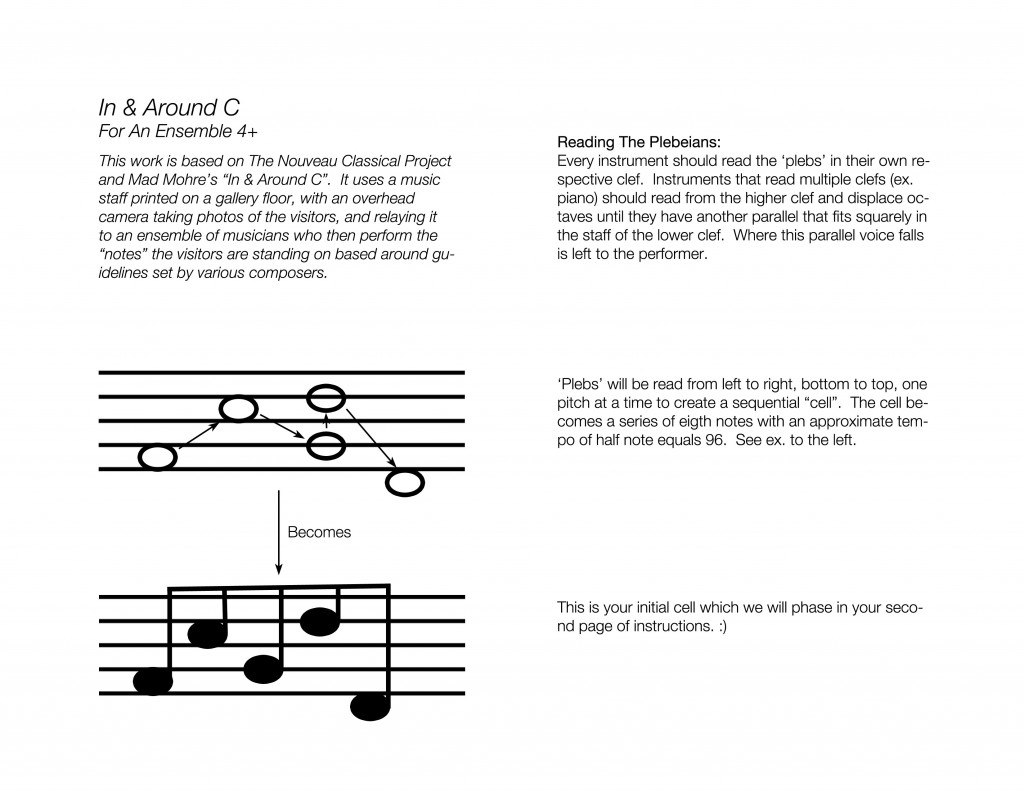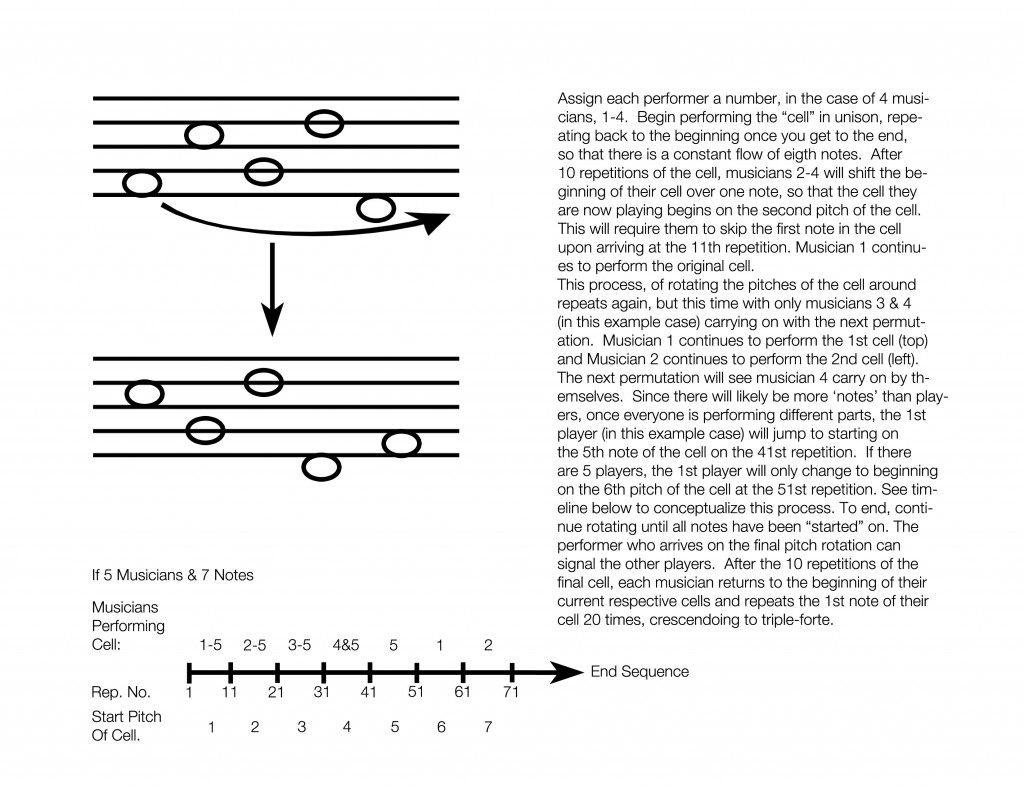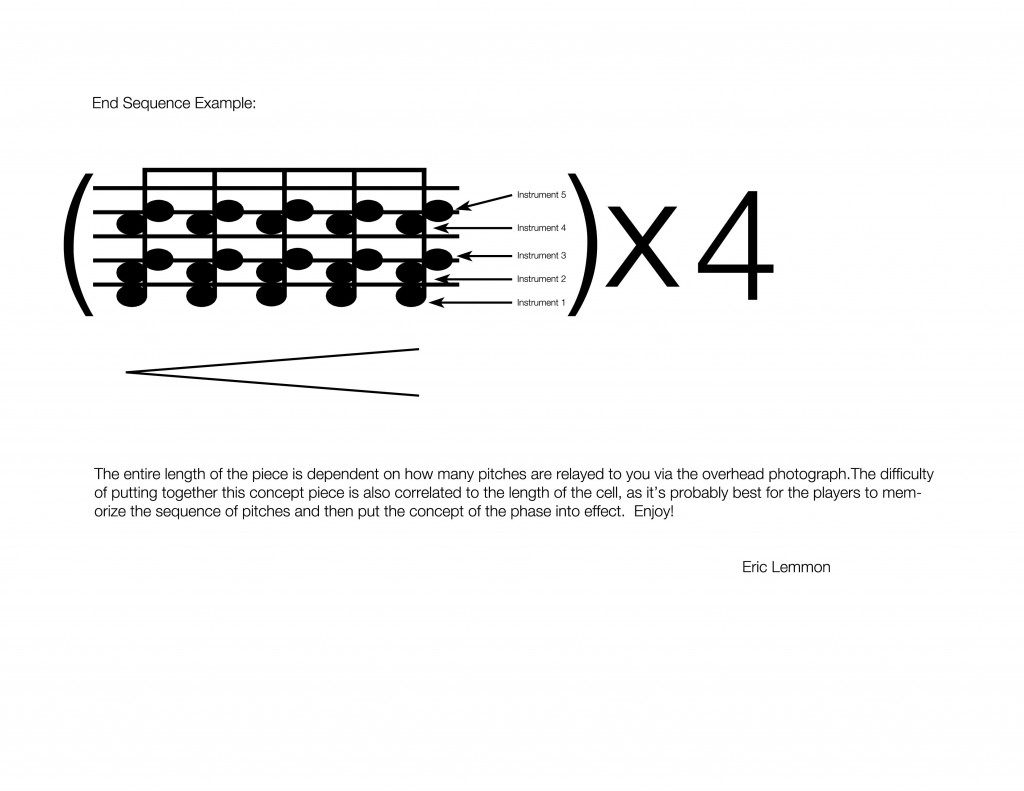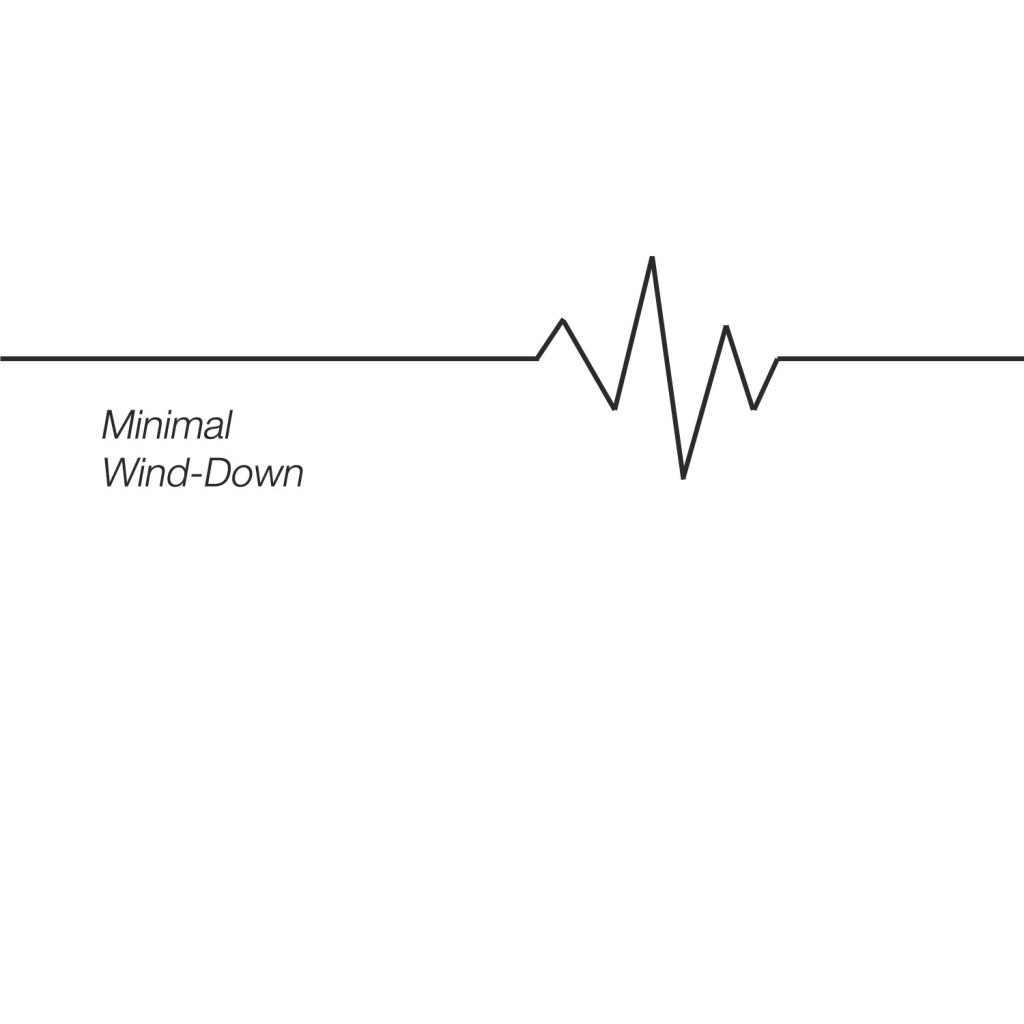Even the good things:
Dear beloved neighbors, fellow artistic peers, and Vaudevillians of the highest order:
It is my fifth year at 26 Bushwick Avenue operating as Vaudeville Park, and for this, I thank you all of you.
Due to unexpected and sudden changes in our lease terms, Vaudeville Park can no longer continue operating at its current location as an event space and venue past December 31st, 2012. I can no longer open the doors several nights a week at 26 Bushwick Avenue to let the world in to see some of the most diverse, intelligent, and fervently creative musical acts, performance, film and arts shows.
There is just so much for me to say about Vaudeville Park, what I think, and what I feel, as it’s founder and artistic director…
What I will say here, is that Vaudeville Park is more than a physical space. Alternative venue spaces are born and reborn in NYC, and they are only the temporary houses of our arts community, cast and frozen in time. Those who build these spaces, the community who strengthens them, realizes them, and wills them into existence will never stop; as we wouldn’t know how to. We are together durable, adaptable, and tenacious because of understanding power in the simple truth; we need one another.
The creative entity known as Vaudeville Park and our nonprofit will continue its journey as a regional Arts and Music event producer and promoter, extending our agenda of edgy and fresh programming to special venues, and with larger shows shows where artists can truly push themselves, and be recognized. I will continue performing, curating and organizing more shows, and better shows than ever before with all of you, I promise that.
The 26 Bushwick Avenue space will be converted into the amazing new home of Vaudeville Arts Alliance Studios, where two to three artists can freely create and be integrated into the greater Vaudeville Park community with open studios, dinners, and other special events open to the public.
Vaudeville Arts Alliance Studios is currently looking for a few good artists to join us in keeping 26 Bushwick Avenue as a hub of artistic activity, by January 1st of 2013. Vaudeville Arts Alliance Studios are under market value for the area, and artists will have access to supplies at Materials for the Arts, take part in Bushwick Open Studios, and much more.
Space is very limited, so please contact vaudevillepark@gmail.com. right away if interested.
Thank you for giving me a chance everyone.
I hope to see you at Vaudeville Park this December for our last shows.
See you soon.
Yours Forever,
Ian M Colletti
Founder/ Director
Vaudeville Park/ Vaudeville Arts Alliance
www.vaudevillepark.org
www.ianmcolletti.com
For those familiar with me, you know I am one of the classical curators for this fine art space. Even if at times, the piano was clunky, and the sound from the street bled into the concert at very delicate moments, Vaudeville Park was always known as a space that was open to the New and Undiscovered. I’ve had the pleasure to book, perform and put together many concerts there over the past year and a half and as the last month of it being an “official” music space comes to an end, I look forward to the organization’s rebirth as a primarily visual art space, but also the opportunity to work with Ian on special events or at other venues that Vaudeville Park begins organizing for.
Because in serial music gestalt is the result of ordering made prior to its creation, the freewheeling inspirational invention of “themes” is virtually impossible, which also eliminates the concept of “development.” Thus the perception of serial music rests upon different premises. The interest it evokes emanates from what it has to offer at any moment rather than from a context that may be followed intellectually by the listener’s retaining in his memory musical shapes and profiles to be recognized later on. It is therefore, contrary to common belief, intellectually much less demanding than traditional music. Whatever structural features the listener seems to observe is a product of his own mental processes. In this sense it requires more imaginative participation than the old music, but it probably also stimulates the imagination to a higher degree. I realized that the “athematic” quality of serial music was for the younger composers perhaps the strongest bait when they were caught in the serial net, because serialism was the most secure way of preventing relapse into traditional routines…
Bolding and italics by me. This statement reminds me a great deal of Rochberg’s essay The Concepts of Musical Time and Space. Where as Rochberg spent about 60 some pages describing how certain serial musics, the densities that inhabit them, the ways to listen to them and how the musics are fundamentally different from the “rhetorical” music that preceded the spatialmusic, Krenek hazily summed up the entire difference in about a sentence. I am curious now as to whether this idea of describing a fundamentally new way of composing as emotional-spatial music is one that was widespread amongst composers of the day or something unique to these two composers who never fully committed to arch-modernism. I suppose it’s back to the stacks with me to rustle up some Boulez, Webern, Schoenberg and maybe some Babbitt!
The opera had not yet been produced at the time of my San Diego lectures. As a postmortem I may add that I had never anticipated the amount of indignation and anguish that the performance, which eventually took place in Hamburg, caused. One could expect the conservatives to be outraged. but they were just as vociferously joined by the radicals on the Left, although in my opera the ‘people’ were victorious after all, and the Establishment inflicted on my engaged poet the ultimate humiliation: that the last refuge where he could indulge in writing a poem was the men’s room in a police jail, which I thought was a sharp enough accusation. But they were furious because they felt that I was making frivolous fun of the liberation efforts of the Third World and accused me of being sponsored by the CIA.
Krenek, Ernst. Horizons Circled: Reflections on My Music. Berkeley: University of California Press, 1974. Print.
I have this coming up, I hope to see your bright and shining faces there!
Five composers join forces to provide your pre-Halloween weekend concert viewing pleasure with Vaudeville Park’s CMJ Post-Minimal Wind-Down. Come join us for drinks + music, and lean back and enjoy fresh post-minimal music from young composers.
PROGRAM:
Josh Booth – To the Gods (Electronics)
Casey Mullen – Fo(u)r Three (Flute, Violin, Viola, Electronics)
Casey Mullen – Ghost Ranch (Flute, Violin, Viola, Electronics)
Matt Frey – Drive (Violin, Piano)*
Samuel J. Crawford – The Fish (Viola, Electronics)*
Eric Lemmon – Prelude No. 1 in C major (Solo Piano)*
Eric Lemmon – Philoctetes’ Slumber (Solo Piano)
PERFORMERS:
Patti Kilroy – Violin
Eric Lemmon – Viola
Anne Dearth – Flute
Peiharn Chen – Piano
*World Premiere
$10 at the door. Doors at 7:30pm, Concert at 8:00
Vaudeville Park
26 Bushwick Ave
Brooklyn, NY 11211
It is not true, and I have never believed, that a contemporary artist must obtain a sociological understanding of the present in order to be able to work. I cannot believe other than that the true artist makes these sociological significances and relationships visible, as it were, in an unconscious way.
Letter from Friedrich Gubler to Ernst Krenek.
Stewart, J. L. (1991). Ernst Krenek: The man and his music. Berkeley: University of California Press.
According to Heidegger, as this sense of being precedes any notions of how or in what manner any particular being or beings exist, it is pre-conceptual, non-propositional, and hence pre-scientific.
Wikipedia’s interpretation of pages 8 & 9 of Heidegger’s Being & Time
Stewart, J. L. (1991). Ernst Krenek: The man and his music. Berkeley: University of California Press.
“As Krenek recalls, when the parts had been distributed, he told the players: ‘Now we are going to play a piece which you will not understand one bit. Whoever thinks he has the theme please play very loud.’ The players dutifully did so, and the ragged performance had a colossal effect that produced an immediate uproar in the audience. Programs and fists were waved above a tumult of shouting and shoving, and some people even came to blows…”
Clearly people going to symphonies these days are much too respectable for this kind of spectacle.
But all this was far removed from Krenek, who was a reluctant soldier and was seeking to remain as inconspicuous as possible to get by with a minimum of effort. He was bored with his training, which was so easy that although he made no effort to excel, he ranked thirtieth in a class of three hundred. To pass the time he read a great deal, some of it sentimental tales of imperiled chastity and miraculous religious conversions by such now deservedly forgotten figures as Paul Keller, Peter Rosegger, Rudolph Hans Bartsch, and Enrica von handel-Mazzetti. And to ensure that his disaffection did not go unnoticed, on his tram rides Krenek made a point of conspicuously reading the heavily censored paper of the leftist Social Democrats, Die Arbeiter Zeitung (The workers’ newspaper), and Karl Kraus’s satirical antimilitarist periodical Die Fackel (The torch). During this period, too, he attended his first public reading (of King Lear) by Kraus, who was to become the strongest influence on his own writing, stronger even than the classics. By these means and his composing he endured the six months of training and in October 1918 was assigned, through his father’s efforts, to the arsenal, where he registered and stored surplus arms. The work was so light that he was able to write music while on duty and, again as a deliberate show of disaffection, to read Henri Barbusse’s bitter and revolutionary war novel Das Feuer (Le feu, later famous in English as Under Fire).
Stewart, John L. Ernst Krenek: The Man and His Music. Berkeley: University of California Press, 1991. Print.
What a passive way to affect change.
From the upcoming weekend edition of the New York Times, Allan Kozinn enjoys himself on the train:
But if Cage intended the performers of “4’33” ” to keep quiet, he did not mean for the work to be heard as silence. He wrote it for the pianist David Tudor to perform in a recital at Maverick Concert Hall, near Woodstock, N.Y., in August 1952. The hall, which still hosts an ambitious summer series, is an open barn, set amid acres of woodland. Part of its charm is that the sounds of the environment — birds, crickets, the wind rustling through the trees, the patter of rain — mingle with the artful tones the musicians produce.
Cage had been supplying artful tones since the 1930s, but in the 1940s he began thinking about the music that could be plucked from the air. That was the point of “4’33”.” The pianist was to open the keyboard lid, sit quietly for 30 seconds, then close the lid and reopen it for the 2-minute-23-second second movement, and again for the 1-minute-40-second finale. (Those, at any rate, are the durations printed in the 1952 Maverick program. In the published score, the movement lengths are 33 seconds, 2 minutes 40 seconds, and 1 minute 20 seconds.) The piano was indeed silent, but the Maverick audience had plenty to listen to, or would have if its members weren’t busy being scandalized by what some regarded as a provocation.
Can a subway ride count as a performance of “4’33” ”? Absolutely.
Actually, no. And it is really quite simple why. Do we consider General Sherman to be a grand sculpture? Was the human being Vincent van Gogh a painting? No, we can appreciate these objects (or people) for their beauty (or grittiness in Gogh’s case) as they are aesthetic objects, but they are not necessarily on their own a work of art. I thought that the dadaists made clear that (at the very least) for any type of ‘material’ to become art, it required some sort of artistic gesture to be acted upon it (even if the gesture is only a proclamation!). When we sit in the alps and gaze over valleys, or scuba dive in coral reefs, we are not viewing art.
So, what Kozinn appreciated on the A train was not 4’33”, repetitions, or excerpts there of, but a simple enjoyment of sound. An appreciation of the beauty of everyday life. I do believe that Cage would have loved the experience just as much as Kozinn did, and he would have agreed with Kozinn that the sounds on that train were art,
Cage would have understood.
“No day goes by without my making use of that piece in my life and in my work,” he told the composer William Duckworth in 1982. “I listen to it every day.”
“I don’t sit down to do it; I turn my attention toward it,” he added. “I realize that it’s going on continuously.”
but Cage is wrong, this definition of art is so expansive that it becomes useless. The space for the art must be created.
Please note that I am not arguing that one should not enjoy sound as an aesthetic object, but that art and aesthetic object differ
Edit: (8/10/12) Grammar
I created a framework for my friends at the Nouveau Classical Project. Here is a description of the project by the org:
In & Around C is a participatory music and art installation. Guests walk onto an enlarged music staff as musicians read and interpret the “notes” on the staff. These “notes” consist of the heads of the guests, which are captured via a webcam and transmitted to a wall-mounted screen. Like a game of shadow tag, participants and musicians have a nuanced, symbiotic, interactive relationship that completes the piece. During the interim between performances, a phantom ‘musician’ will perform: Gabe Taubman has designed a program, In C++, that converts participants’ figures into musical notation and plays music from a computer. The goal of In & Around C is to create a deeper level of engagement between art and the public through physical and aural immersion. Composers have created frameworks with varying styles to guide musicians in interpreting the still images of people on the staff.
Come out and see it! I’ve also posted the instructions of the work below. Enjoy!
Info
Gallery One Twenty Eight- 128 Rivington between Essex and Ludlow, New York, NY 10002
August 17-30, 2012
Sunday: 1-6 pm; Wednesday: 1-7 pm; Thursday thru Saturday: 1-8 pm. Closed Monday and Tuesday. Performance schedule coming soon
FREE, but donations are appreciated! Suggested Donation: $10 Donate in advance.
RSVP
Team
Mad Mohre, Artist
Sugar Vendil, Director and Producer
Tara Scott and Yoobin Whang, Production Assistants
PERFORMERS
The Nouveau Classical Project, of course…
Ashley Bathgate, cellist
Vicky Chow, pianist
Tristan McKay, composer and pianist
Owen Weaver, percussionist
Hotel Elefant
LAMA Ensemble
COMPOSERS
Jeremiah Bornfield
Glenn Cornett
Patrick Grant
Trevor Gureckis
Eric Lemmon
Alex Weston



This piece is part of the a set of 26 preludes that I am writing, one for each key and 2 extra, one for a straight atonal work and another for a twelve tone work. The set of preludes are ostensibly supposed to to be unified by the fact that each work is written in a different style. This piece is supposed to be some sort of high romantic virtuoso piece. Sheet music and wonderful recording by Masha Sumareva below. Enjoy!
Sheet Music: Prelude No. 3 in Db Major
Recording: Prelude No. 3 in Db Major
|
Musicians
My Projects
|



